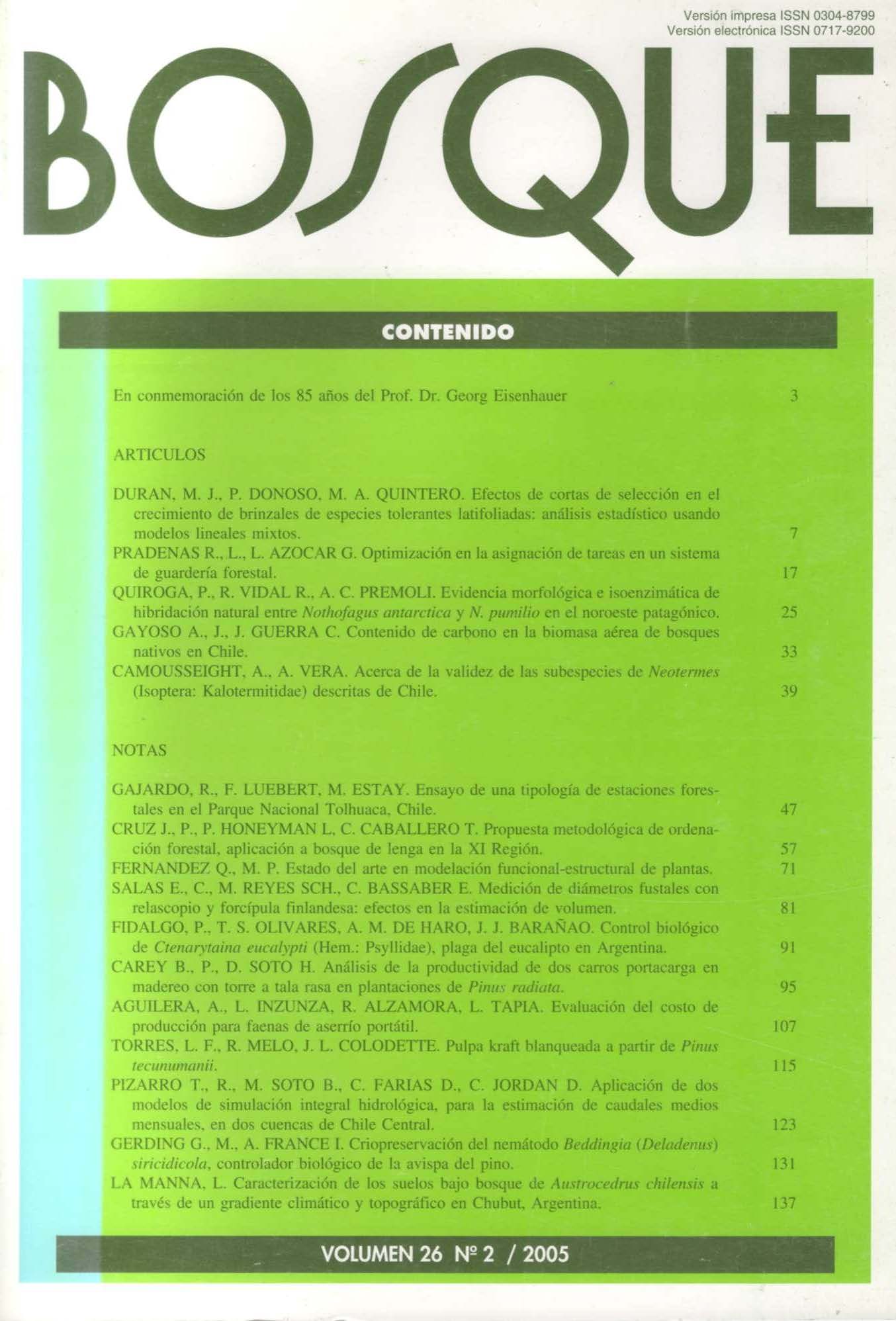Main Article Content
Aug 31, 2005
Abstract
Austrocedrus chilensis forests (Cordilleran cypress) develop in the Patagonian Andes and its piedmont, covering an area of high environmental heterogeneity. In this work the soils where A. chilensis stands develop in Chubut province were characterized along a precipitation and topographic gradient. Eight sampling sites with pure and dense A. chilensis forests were selected, covering a latitudinal range from 42ë0’ up to 43ë14’ L.S. In each sampling site morphological, physical and chemical soil properties were characterized. A. chilensis forest developed in a wide range of soils with different parent materials: glacifluvial and alluvial deposits, andesite, volcanic ash, and pumice. Volcanic soils presented lithological discontinuities, either glacifluvial or rocky substratum. Generally, soils presented dark superficial horizons, rich in organic matter (8.5 to 14.6%) and with low bulk densities (0.57 to 0.97 g/cm3), and slightly acid to neutral pH in water along the profile. However, different parent materials determined great variations in texture (clayey to sandy), rock fragments (0 to >50%), effective soil depth (35 to >140 cm), allophanization degree (null to high), water retention, etc. Results showed A. chilensis capacity to inhabit different soils, from clayey, shallow and vertic soils to volcanic and deep ones.


